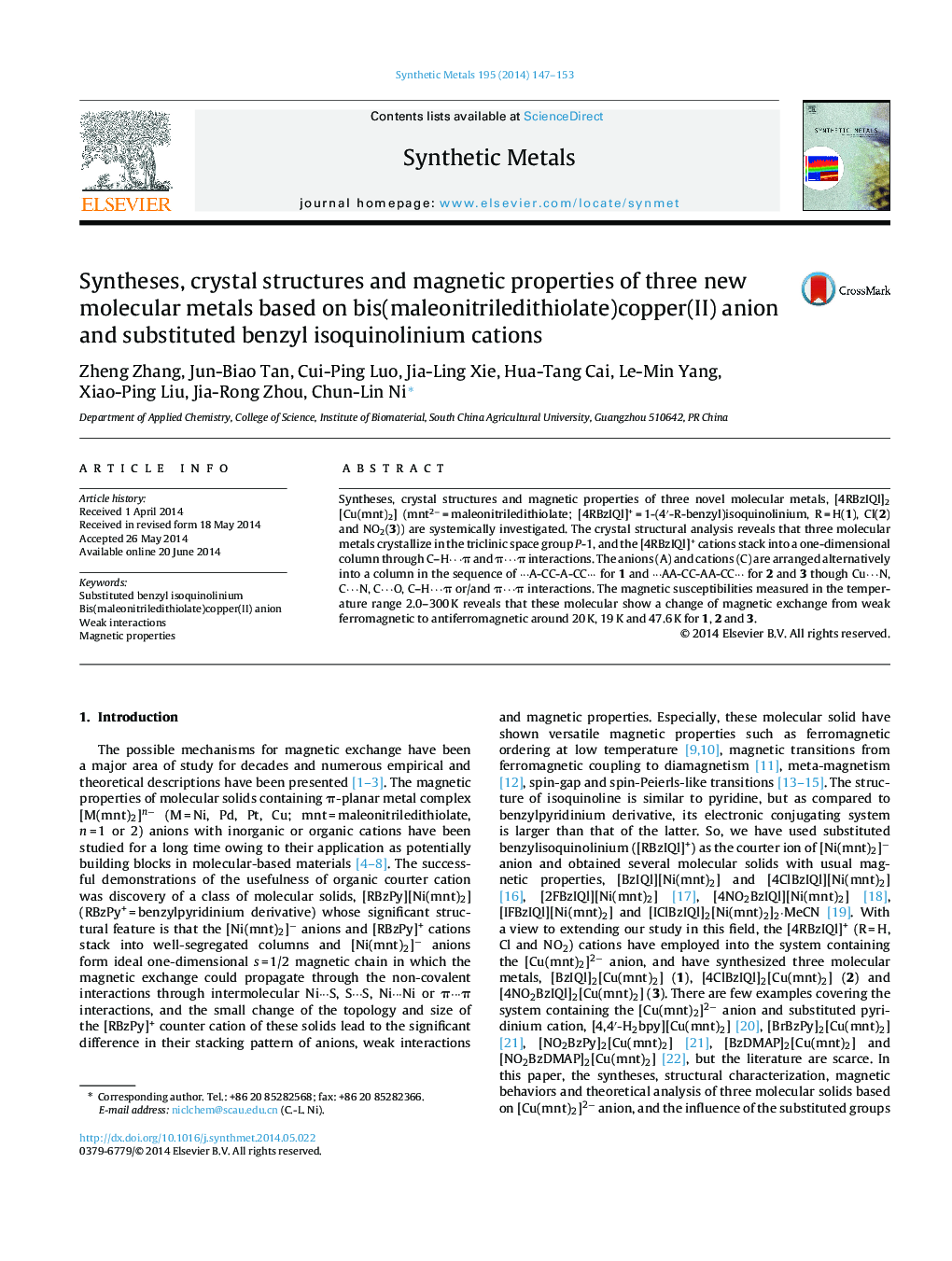| کد مقاله | کد نشریه | سال انتشار | مقاله انگلیسی | نسخه تمام متن |
|---|---|---|---|---|
| 1440938 | 1509382 | 2014 | 7 صفحه PDF | دانلود رایگان |

• Three molecular solids containing [Cu(mnt)2]2− anion were synthesized and characterized.
• The cations stack into a one-dimensional column through C–H⋯π and π⋯π interactions.
• The anions and cations are arranged alternatively into a column.
• These molecular show a change of magnetic exchange upon the temperature is lowered.
Syntheses, crystal structures and magnetic properties of three novel molecular metals, [4RBzIQl]2[Cu(mnt)2] (mnt2− = maleonitriledithiolate; [4RBzIQl]+ = 1-(4′-R-benzyl)isoquinolinium, R = H(1), Cl(2) and NO2(3)) are systemically investigated. The crystal structural analysis reveals that three molecular metals crystallize in the triclinic space group P-1, and the [4RBzIQl]+ cations stack into a one-dimensional column through C–H⋯π and π⋯π interactions. The anions (A) and cations (C) are arranged alternatively into a column in the sequence of ···A-CC-A-CC··· for 1 and ···AA-CC-AA-CC··· for 2 and 3 though Cu⋯N, C⋯N, C⋯O, C–H⋯π or/and π⋯π interactions. The magnetic susceptibilities measured in the temperature range 2.0–300 K reveals that these molecular show a change of magnetic exchange from weak ferromagnetic to antiferromagnetic around 20 K, 19 K and 47.6 K for 1, 2 and 3.
Figure optionsDownload as PowerPoint slide
Journal: Synthetic Metals - Volume 195, September 2014, Pages 147–153